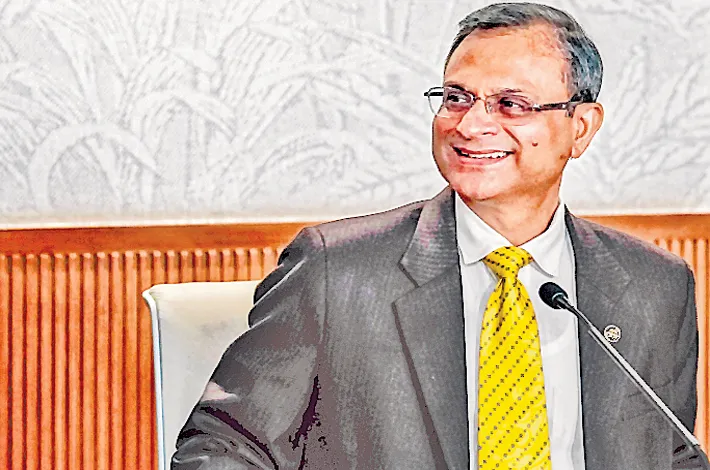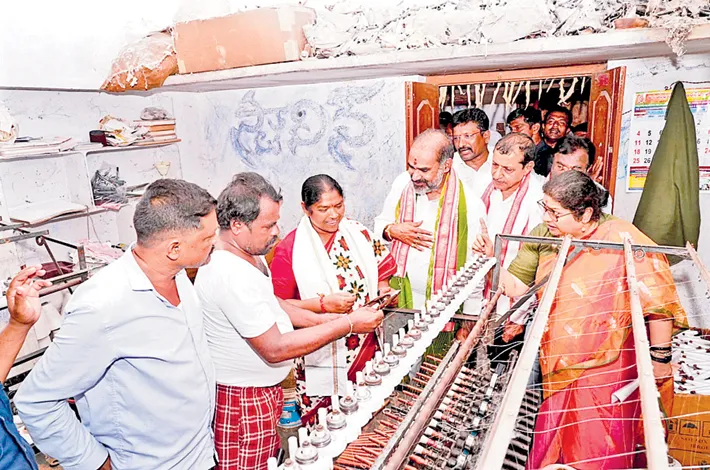22-step package to enhance economic growth
02-10-2025 12:00:00 AM

Mkt-friendly measures to improve bank credit, promote EODB, and internationalise rupee
The Reserve Bank of India (RBI) on Wednesday announced a package of twenty two measures aimed at strengthening the resilience and competitiveness of the banking sector, improving the flow of credit, promoting ease of doing business, simplifying foreign exchange management, enhancing consumer satisfaction, and internationalisation of Indian Rupee.
Strengthening the resilience
The Expected Credit Loss (ECL) framework of provisioning with prudential floors is proposed to be made applicable to all scheduled commercial banks (excluding small finance banks, payment banks, regional rural banks and all India financial institutions with effect from April 1, 2027. They will be given a Glide path, till March 31, 2031, to smoothen the one-time impact of higher provisioning, if any, on their existing books.
“Further, it is proposed to make the revised Basel III capital adequacy norms effective for commercial banks (excluding SFBs, PBs and RRBs) from Apr 2027. In furtherance of this, a draft of the standardised approach for “credit risk” will be issued shortly. Under the revised approach, the proposed lower risk weights on certain segments are expected to reduce the overall capital requirements, particularly for MSMEs and residential real estate (including home loans),” the RBI said.
It is further proposed to introduce risk-based deposit insurance premium with the currently applicable flat rate of premium as the ceiling. This will incentivise sound risk management by banks and reduce premiums to be paid by better rated banks.
Improving the flow of credit
The apex bank has announced five measures to improve flow of credit. One, to expand the scope of capital market lending by banks, it is proposed to provide an enabling framework for Indian banks to finance acquisitions by Indian corporates. Two, it is proposed to (a) remove the regulatory ceiling on lending against listed debt securities and (b) enhance limits for lending by banks against shares from Rs.20 lakh to Rs 1 crore and for IPO financing from Rs 10 lakh to Rs 25 lakh per person.
Three, it is proposed to withdraw the framework introduced in 2016 that disincentivized lending by banks to specified borrowers (with credit limit from banking system of Rs 10,000 crore and above). Four, to reduce the cost of infrastructure financing by NBFCs, it is proposed to reduce the risk weights applicable to lending by NBFCs to operational, high quality infrastructure projects.
“Since 2004, licensing for Urban Co-operative Banks (UCBs) had been paused. Considering the positive developments in the sector during the last two decades and in response to the growing demand from the stakeholders, we propose to publish a discussion paper on licensing of new UCBs,” said RBI Governor Sanjay Malhotra.
Promoting Ease of Doing Business
As far as the measures related to EoDB, the RBI has unveiled seven announcements including those related to FEMA. First, a large number of circulars and directions totalling about 9000, have been consolidated, subject wise, across 11 types of regulated entities. Drafts of the same will be issued shortly for public consultation.
Simplifying foreX management
Key provisions relating to eligible borrowers, recognised lenders, limits on borrowing, cost of borrowing, end-use and reporting, etc. in ECB regulations, issued under FEMA, are proposed to be rationalised. It is proposed to rationalise FEMA regulations regarding non-residents establishing their business presence in India.
Enhancing consumer satisfaction
The RBI has announced three consumer centric proposals. One, the bouquet of services offered to Basic Savings Bank Deposit account holders without levy of minimum balance charges is proposed to be expanded to, inter alia, include digital banking (mobile/internet banking) services. Two, the Internal Ombudsman mechanism is proposed to be strengthened to make grievance redressal by regulated entities more effective. Three, the RBI Ombudsman Scheme is also being revised for improved grievance redressal and rural cooperative banks are being included under the ambit of the Scheme.
Internationalising Indian Rupee
“We have been making steady progress in the use of the Indian Rupee for international trade. Three measures are proposed in this regard: First, permit AD banks to lend in rupees to non-residents from Bhutan, Nepal and Sri Lanka for cross border trade transactions. Second, establish transparent reference rates for currencies of India’s major trading partners to facilitate INR based transactions, and third, permit wider use of SRVA balances by making them eligible for investment in corporate bonds and commercial papers,” Malhotra said.








